Desert Camouflage in Winter Time – French Daguet Camouflage
Introduction
With winter being here again, it is time for another camouflage review. Looking again at desert camouflage patterns in a Winter environment, I will take a closer look at French Daguet camouflage in this field test.
In a previous review I already wrote about Finnish M04 Desert Camouflage as well as my intentions and thoughts about these considerations. So if you want to read about my thoughts behind this series, follow this link.
With the help of Arktis Ltd. I got my hands on a set of French Daguet, another camouflage pattern which is actively fielded within a standing army and not a commercial pattern. So many thanks for their support – make sure to give them a visit
A few explanations regarding the camo and the usual caveats and then we go right into the test.
French Daguet Desert Camouflage
French Daguet Camouflage is France’s issued desert pattern since the First Gulf War in 1991. It was developed a few years before that, but was named after Operation Daguet, in which it was used for the first time.
Consisting of large brown and tan stripes on a sandy background, it is a pattern using only macro elements as the long engagement distances in the desert were incorporated into the design. The pattern might have changed a bit over the years, however the colors remain the same and it is still in use up until today.
With that being said, I will go over the usual methodic caveats, before looking at the field test. This is mostly copy & paste – so returning readers can jump to the next section.
Methodic Remarks
As always I want to point out several important aspects beforehand. First of all, I do not claim any scientific standard with my camouflage comparisons. I also conduct them with my best knowledge and the available resources.
The pictures are usually taken at the same locations I always use for my camouflage comparisons. That way you can compare the various field tests I have done so far with each other. Recently my main spot was completely lost to deforestation, so I had to add a new location, and since I am looking at Desert Camouflage patterns. Just like with Finnish M04 I also added a large gravel/sand pit to the mix.
Before I start, please consider the following – as always:
I did not edit the pictures in any special way, except the following:
- Lens correction
- Watermark
- Blurred my face out if necessary
- .jpeg compression to make it web compliant
- I always do a proper white balance to make colors appear the way they are.
A short explanation to the environment and the procedure:
The pattern was tested in a Central European environment. Information about the various locations will be stated in the subsections. The pictures usually portray three different positions:
Standing in the open (to get an idea of the pattern in this particular surroundings and if the colors match it).
Kneeling.
The prone position (to mimic basic, up to ideal concealment without using enhancements).
As always I photographed the pattern with a wide angle lens at first and then with 35mm focal length, which mimics the actual picture the human eye would perceive at this distance. Having in mind the three different positions mentioned before, I usually end up with 6 pictures of each location.
With that being said, let’s take a closer look at the pictures themselves.
French Daguet Desert Camouflage
Location 1
As I have mentioned several times by now, my main location was cut down on a large basis. As a result I chose a replacement that is right next to Location 2, but in a different direction. Just like the previous location this one is a typical European mixed forest with a high foliage canopy and some basic bushes, ferns and little trees on the ground.
During winter this location was covered in a barely interrupted snow surface, resulting in a dominant white environment, with tree trunks and cut branches contrasting the picture.
The pictures were taken before noon under a partially cloudy sky with occasional sun beams.
The camera is standing roughly 20 away from the human silhouette.
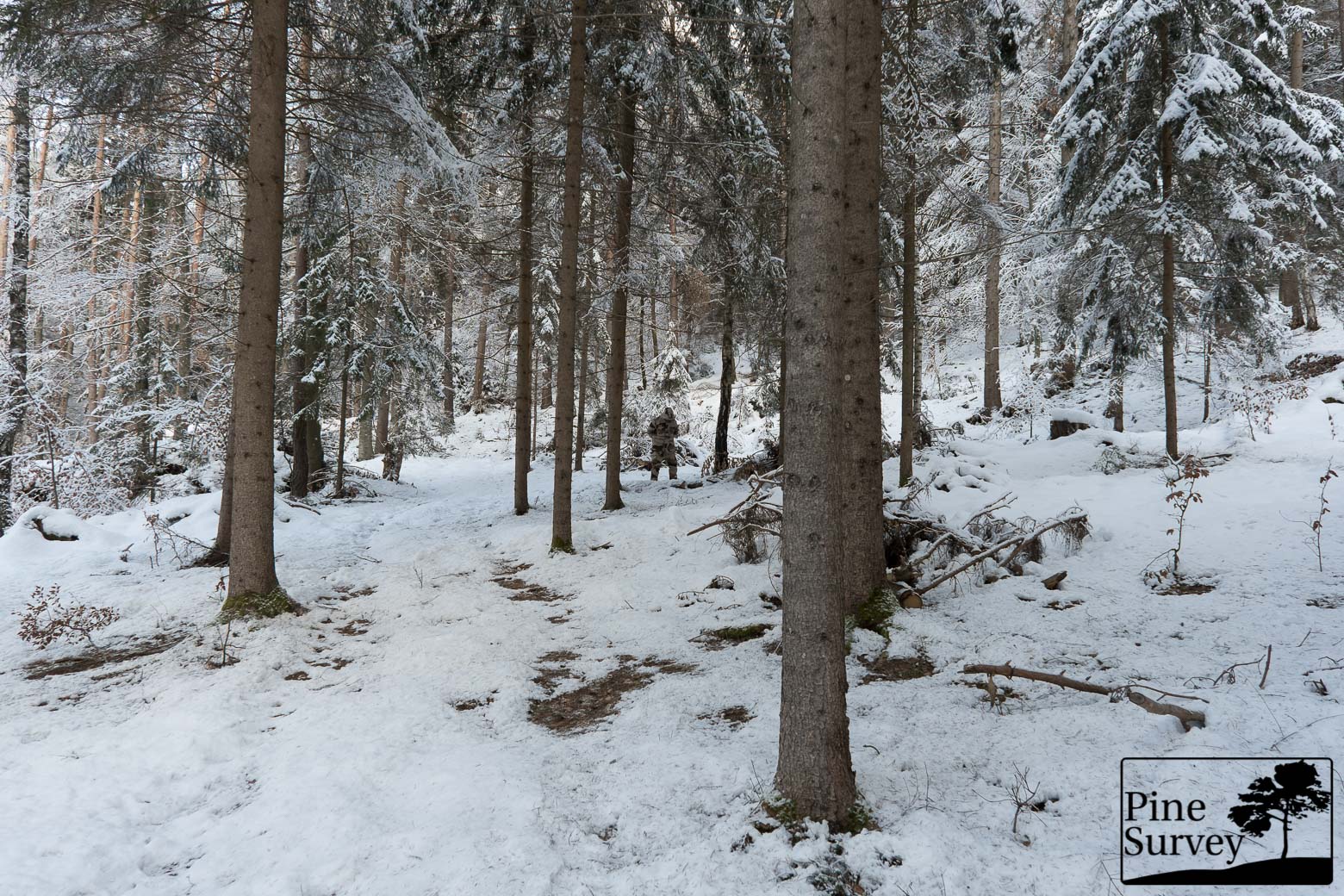
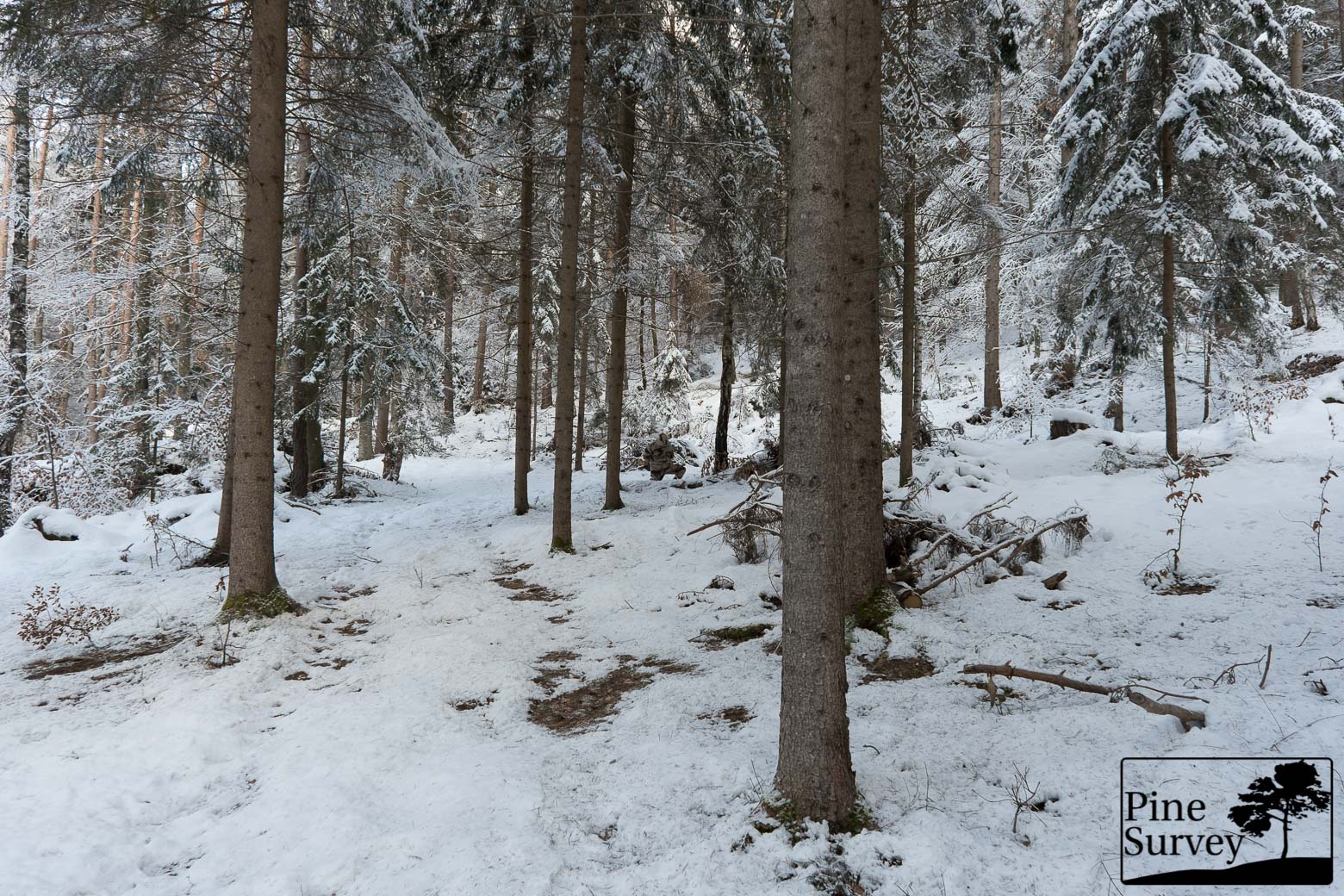
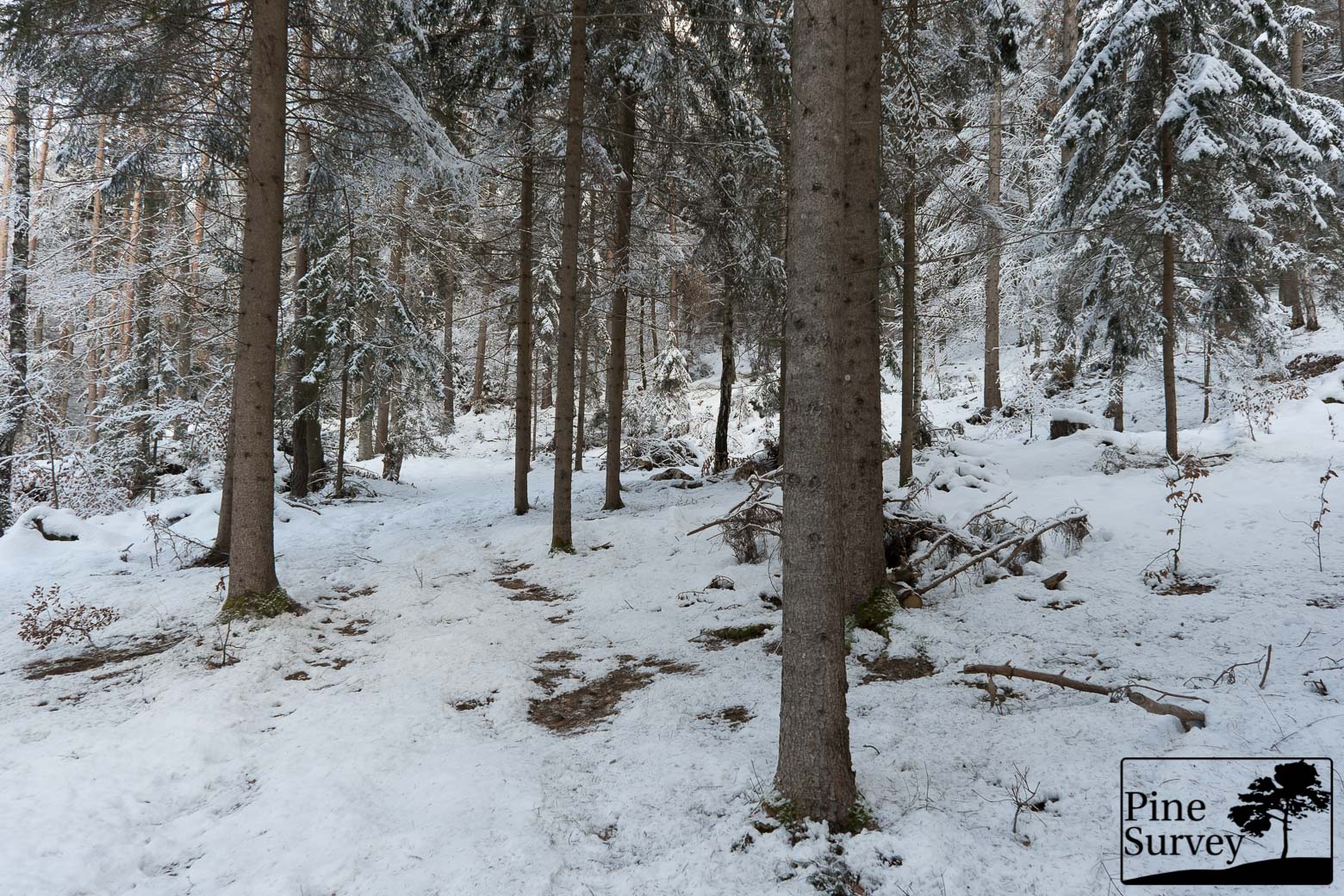
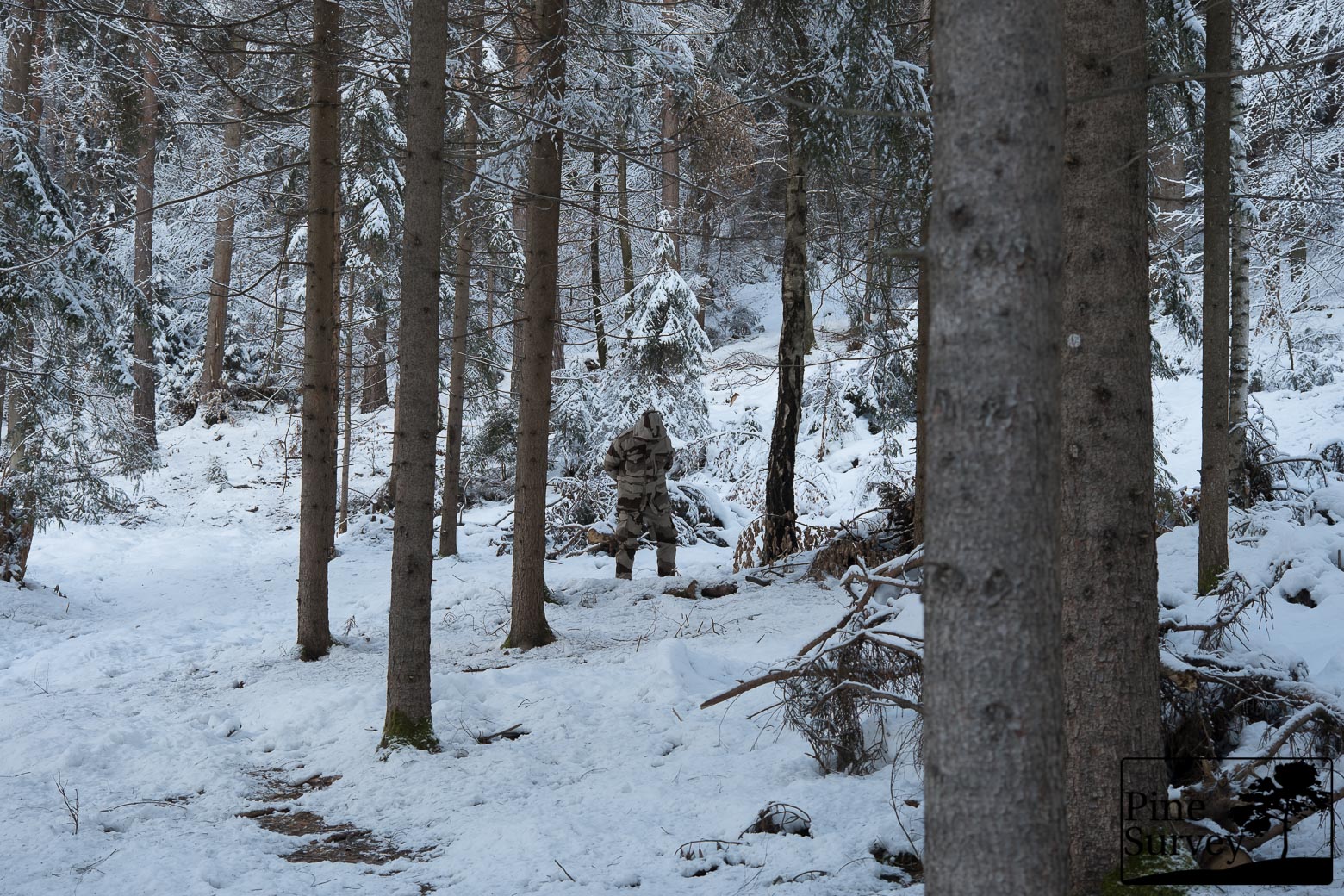
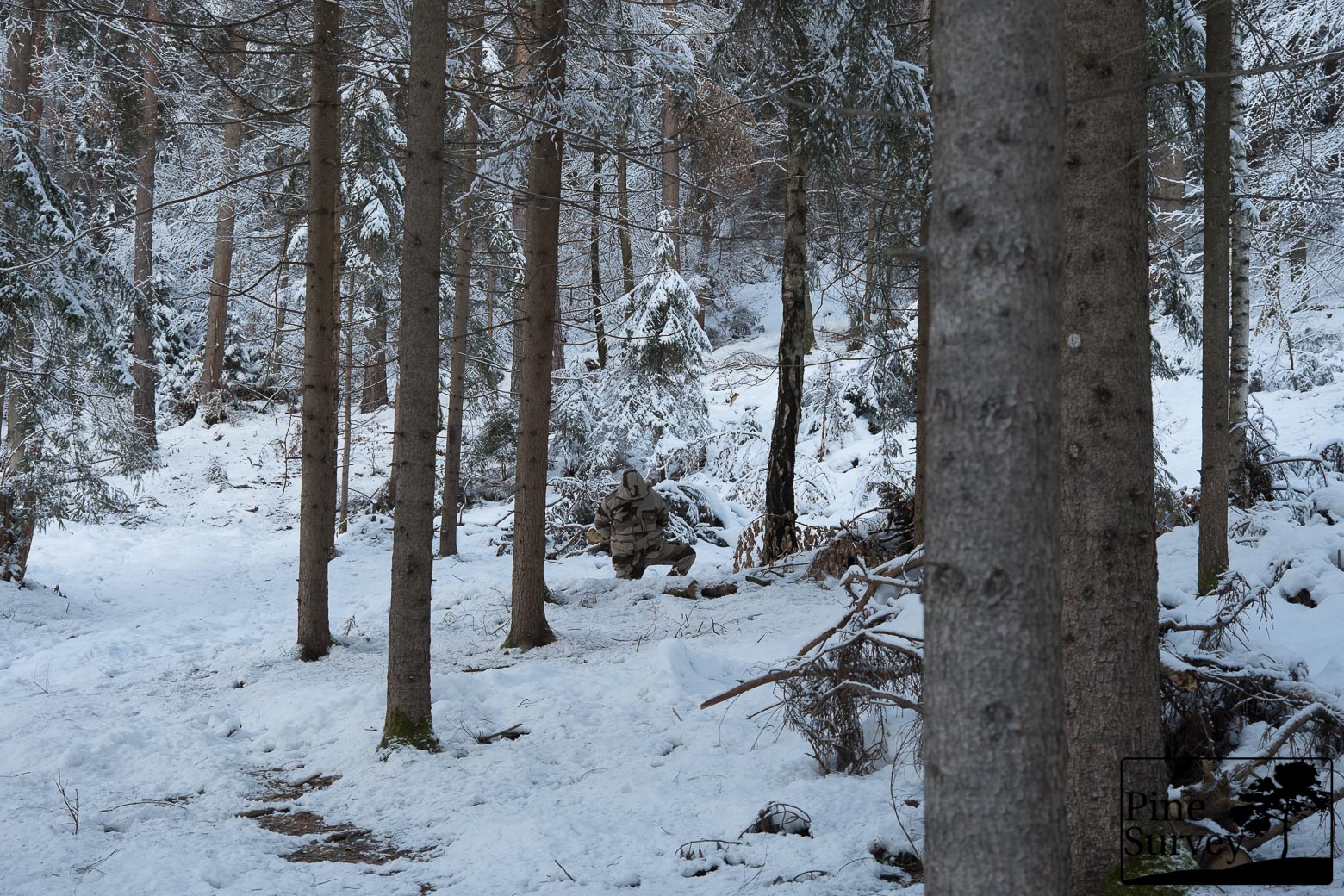
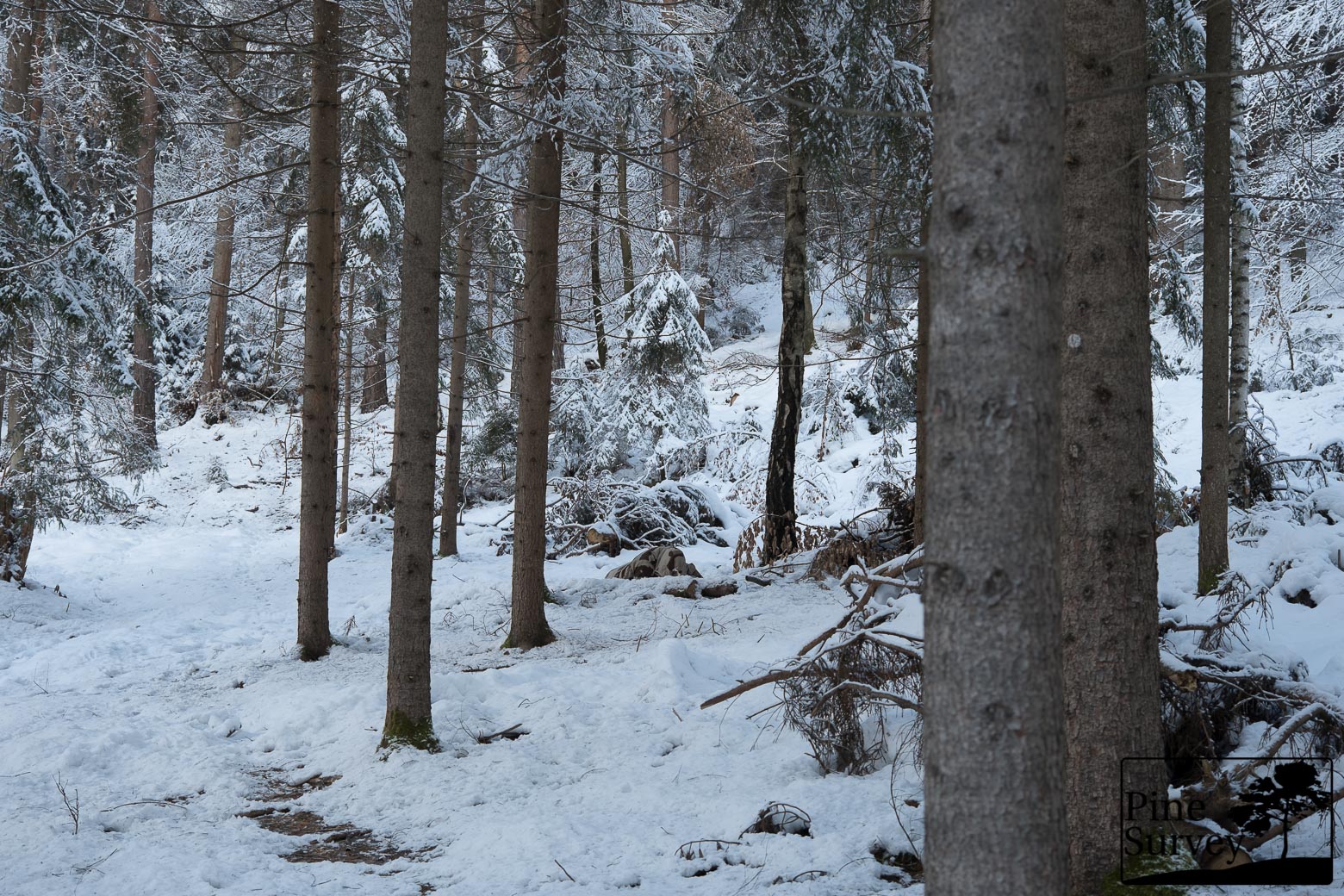
Observations – Location 1
At this distance it becomes clear why older camouflage patterns are using macro elements rather than more complex midi and micro fractals. The larger brown areas of French Daguet disrupt the silhouette. So while the user is visible in the standing position the contour is lessened by the pattern, while the tan and brown colors match the surrounding tree trunks. Looking at the wide angle lens pictures and the standing position, French Daguet does not work as bad, as one might suspect. Especially when kneeling down, the human silhouette becomes less discernible and as a result the macro elements in combination with the blending effect of the colors provide a good camouflaging. when going into the prone position one might see something brown at the ground, but nothing out of the ordinary in that direction.
The pictures using 35mm focal length show a more detailed situation. Again, the user is clearly visible in the standing position, as the silhouette is dead center and in front of a white background. However, one can see how useful the brown and tan desert colors are in blending with the surrounding tree trunks and dead vegetation. The disruptive effect of the macro elements can be seen especially when looking at the hip and knees.
When kneeling down, the effectiveness changes even more as the colors of the pattern blend with the cut down wood in the background and the rest of the silhouette is broken apart.
The prone position is as always the best way to conceal oneself from horizontal observation. In this case the colors match the surrounding and the macro elements provide plenty of disruption.
Location 2
This location is a mixture of deciduous and coniferous forest. As mentioned in other reviews, it changed a bit as there is now a huge pile of cut branches on one side. Since most of the leaves fell off you can see further back into the forest. At the same time the snow covered surroundings produce a monotone environment, only disrupted by the dark tree trunks.
The pictures were taken before noon under a clouded sky and the camera is standing roughly 15m away from the human silhouette.

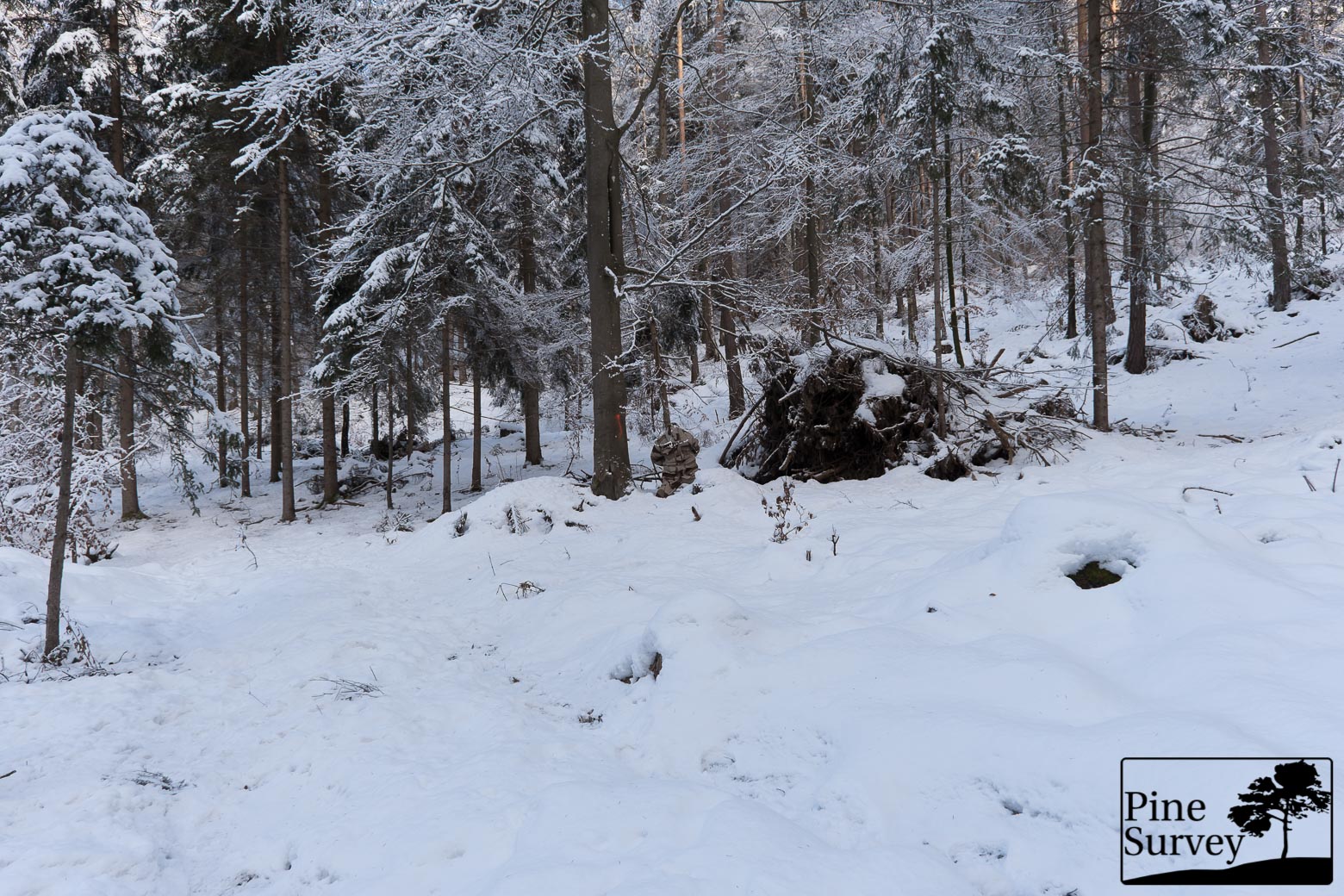
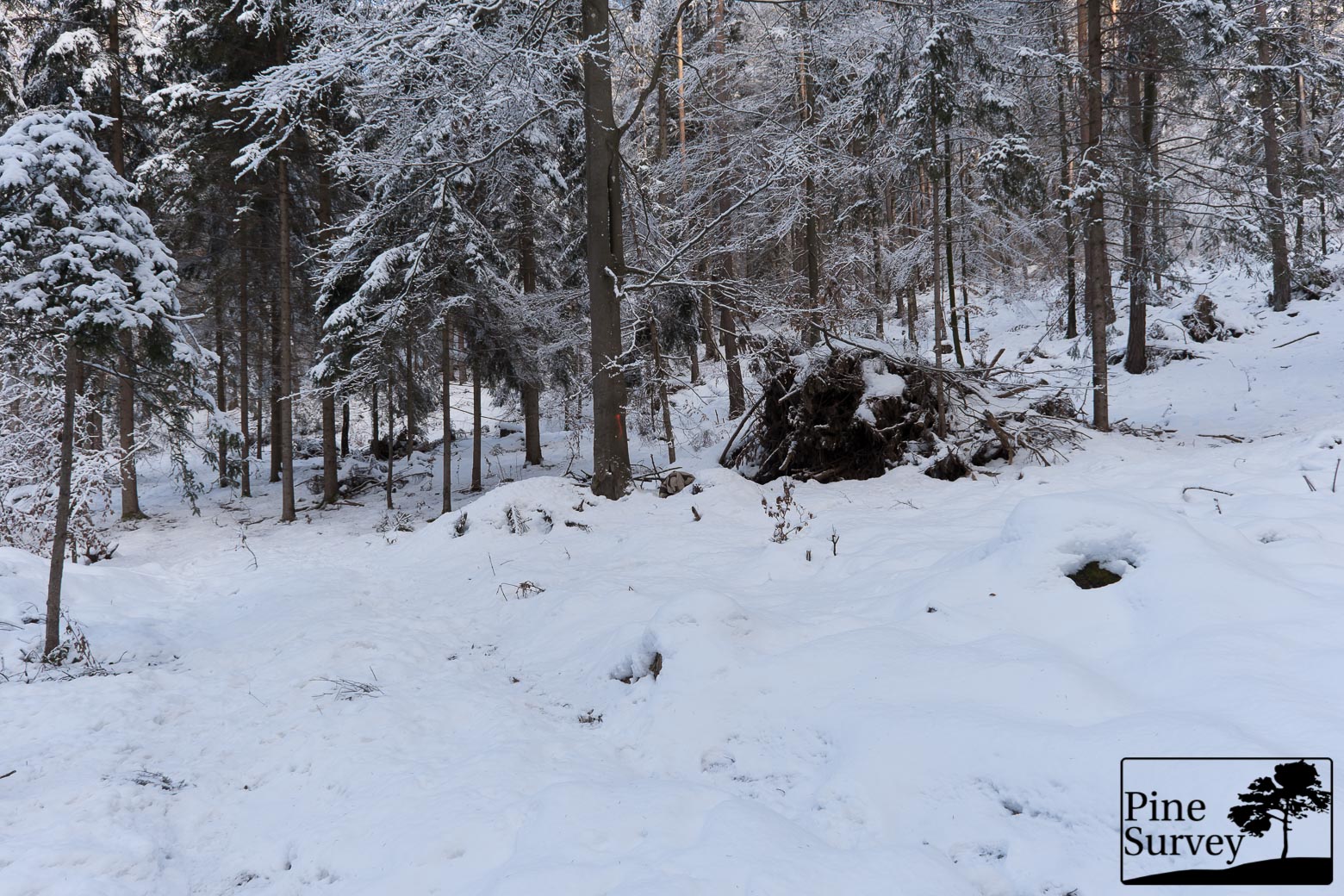
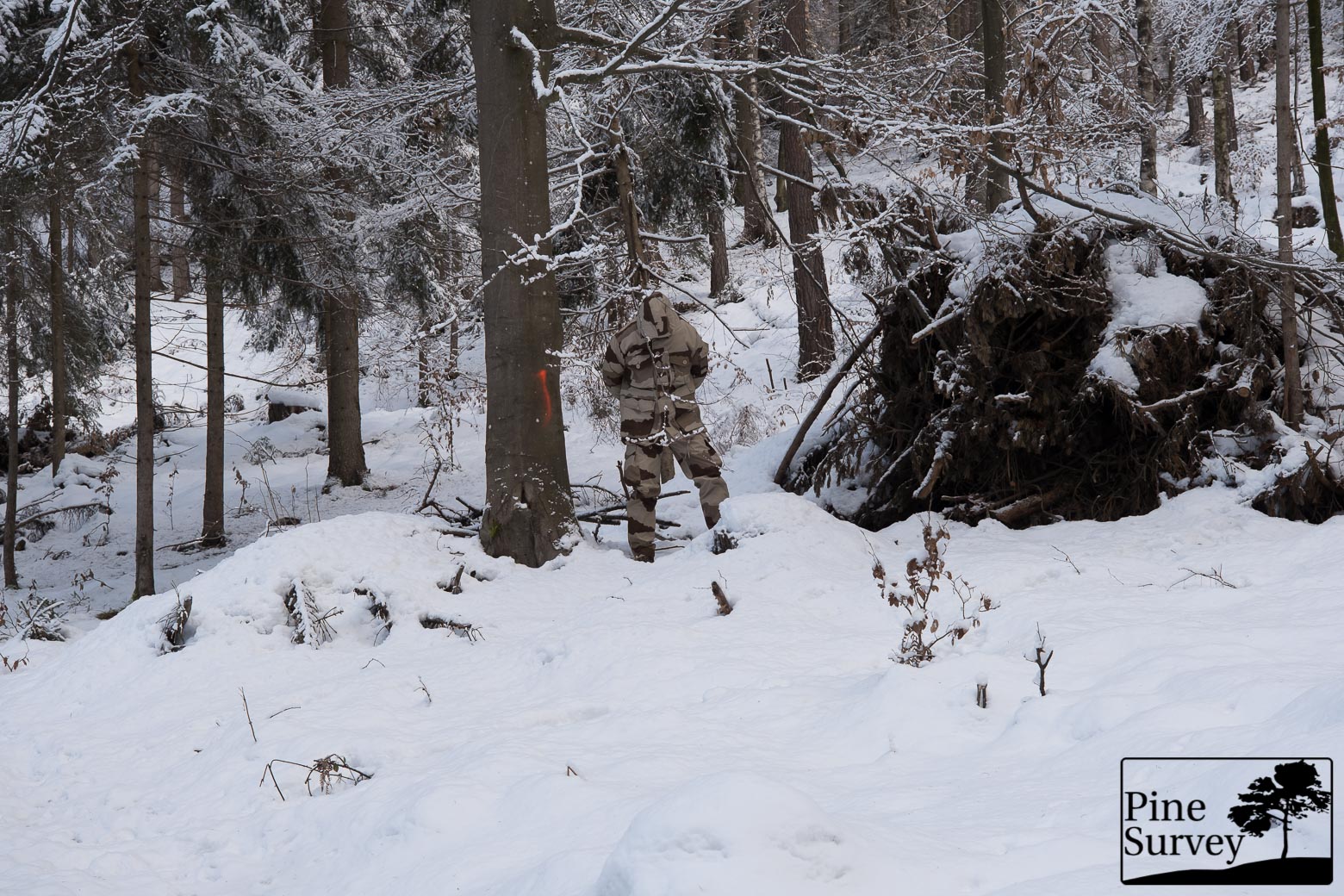
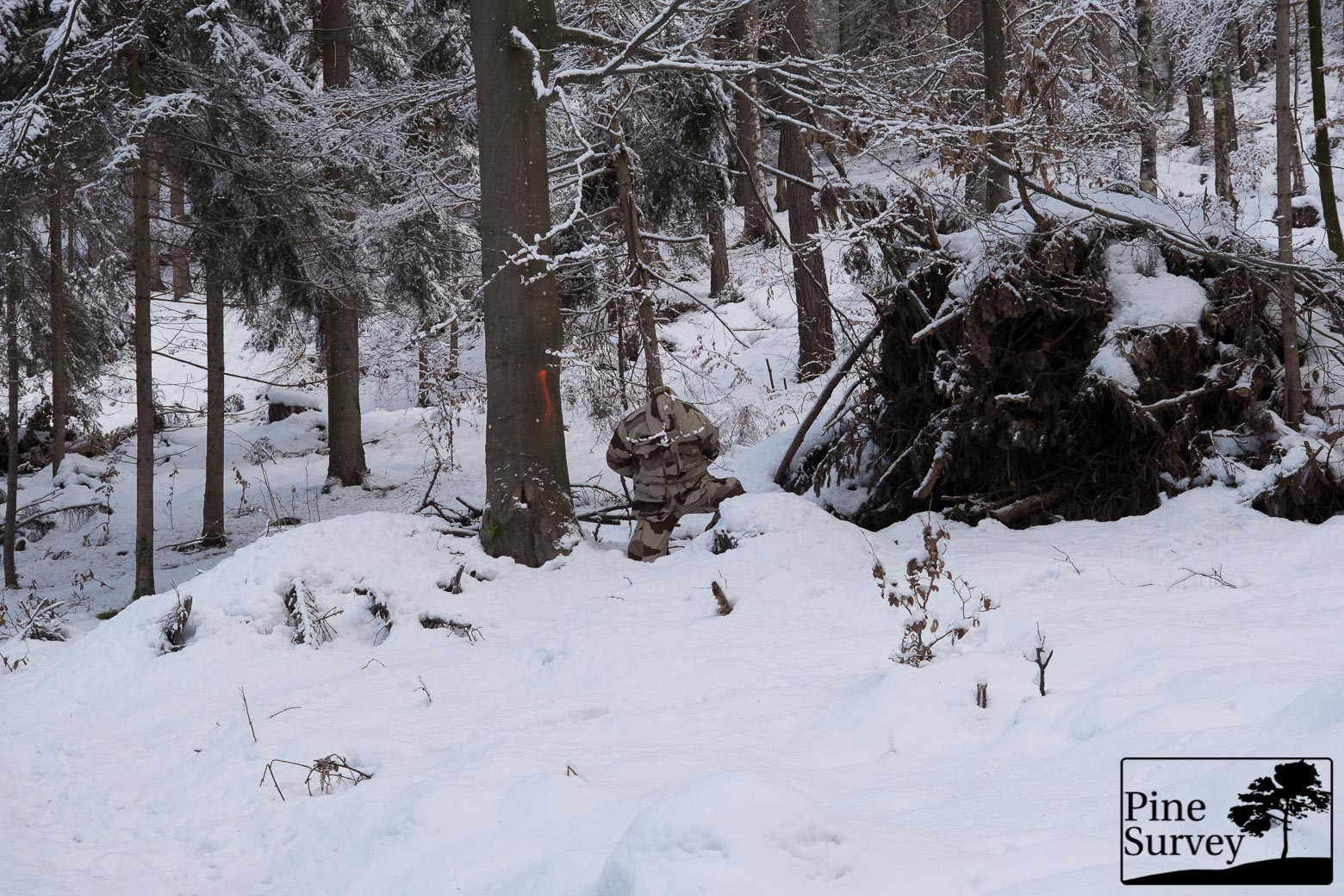
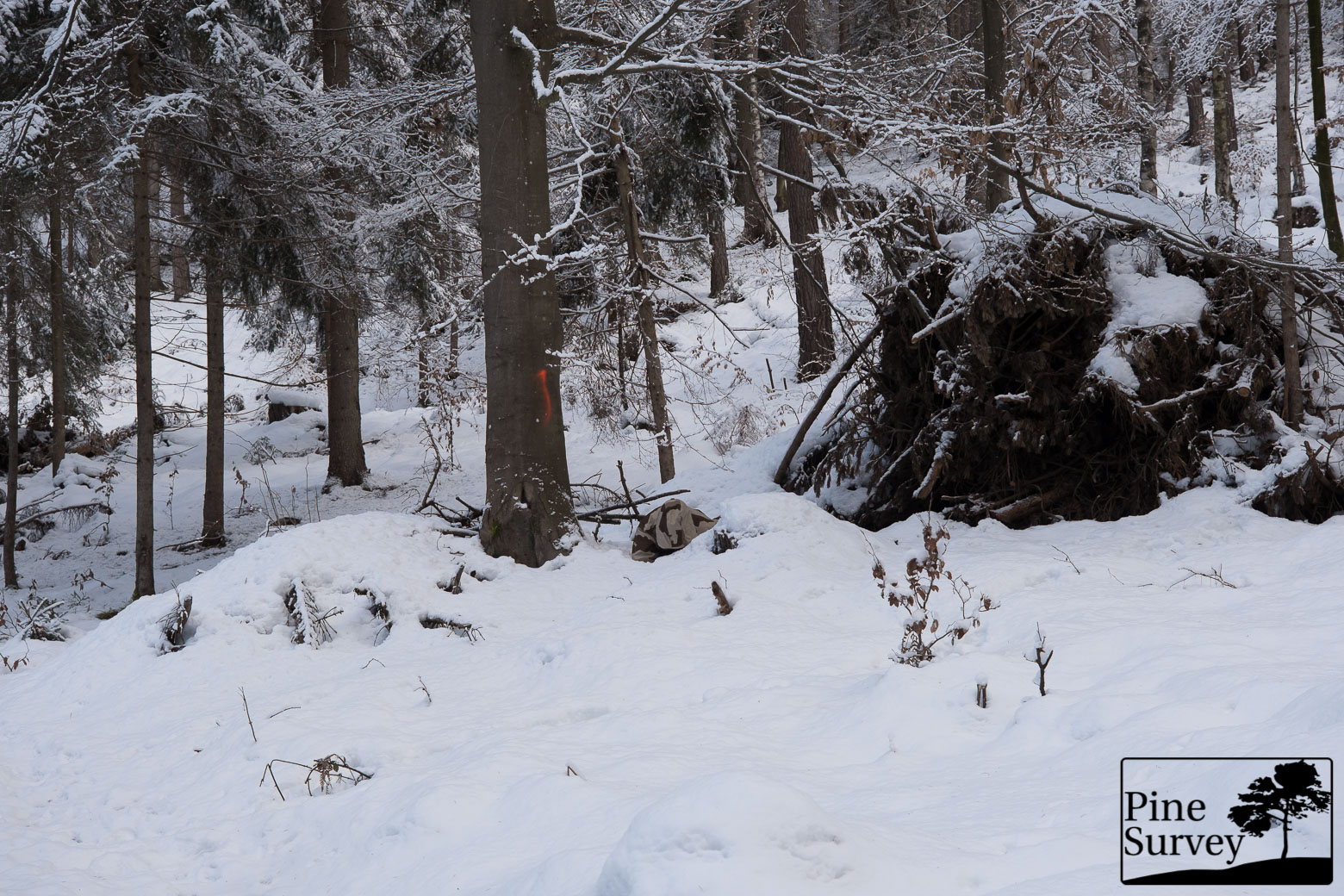
Observations – Location 2
The wide angle lens provides an impression of a longer distance, showing the standing position using French Daguet. In this case the colors are just as muted as the visible vegetation around and blend in nicely with the various shades of brown. The disruptive effect of the Daguet pattern breaks up the silhouette nicely, only the legs stand out because of the white background. Other than that the camouflage actually provides the effect it is meant to do – delaying visual identification long enough to gain an advantage.
When kneeling down, the macro elements and brown shades work incredibly well in this spot, making an exact identification hard, even though one will see the contour of the person at one point.
The prone position is very effective here, as the body is also covered by a pile of snow. However, what is visible of the pattern cannot be related immediately to a person.
The 35mm focal length shows the actual human vision at this distance and accordingly one can see the matching colors of French Daguet. While it is not white – obviously – the tan and brown colors of the pattern mix very well with the surroundings. The macro elements are also shown wonderfully, when looking at the standing position. The disruptive effect is evenly distributed and one can imagine the effect at longer engagement distances.
When kneeling down the above mentioned statements apply as well. The silhouette is nicely disrupted, while the pattern colors match the surrounding dead vegetation and tree trunks. Overall it does not appear “off” in these pictures and adapts to the surroundings.
The prone shows the effective disruption by the Daguet macro pattern, making the lying person appear as an odd object, but not as human.
Location 3
Location number three is located directly near a gravel/sand pit. Since it is a dirt road, features plenty of areas of sand, earth, rocks and torn up vegetation, it gives an excellent mix of dry sand, wet earth and everything in between.
Snow is covering the area only partially, so this is the environment I was actually aiming for, when thinking of this test.
The pictures were taken around noon under a sunny sky and the camera is standing roughly 25m away from the human silhouette.
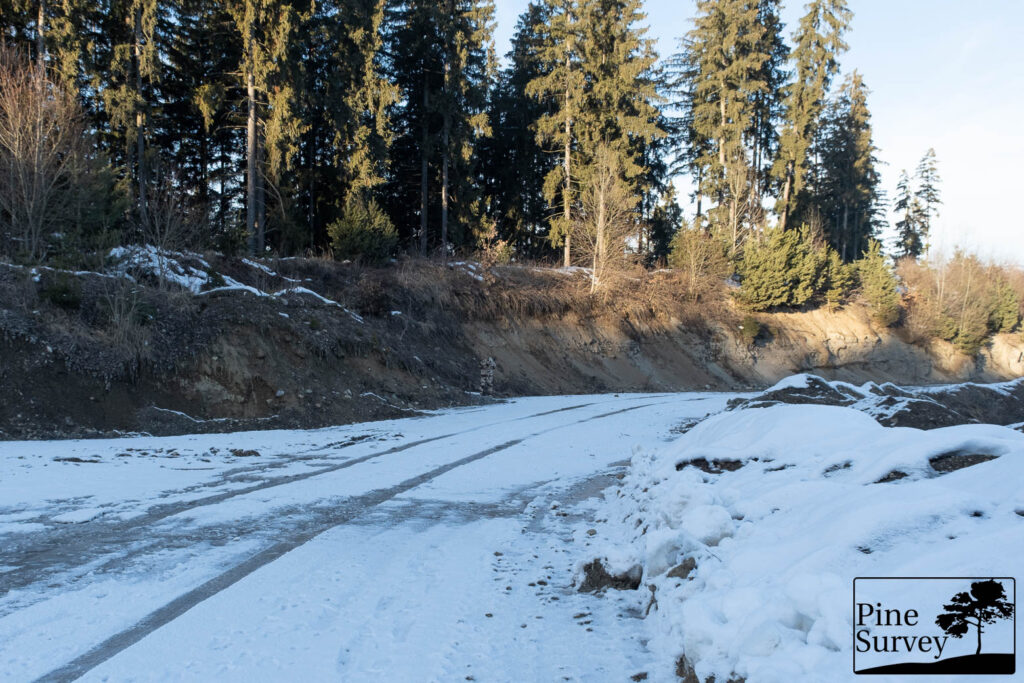
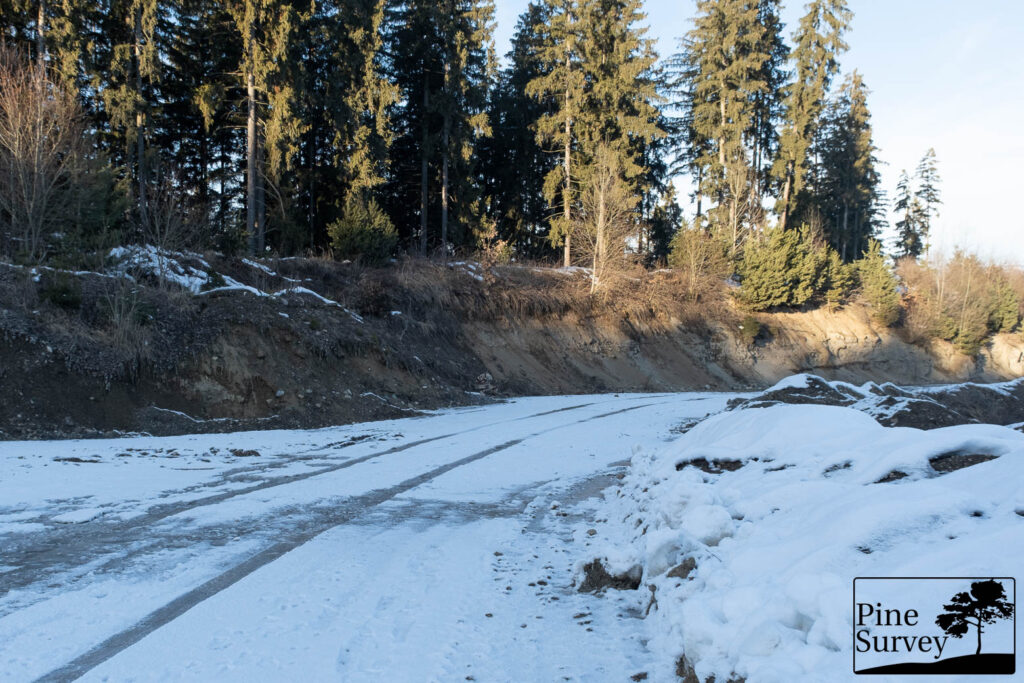
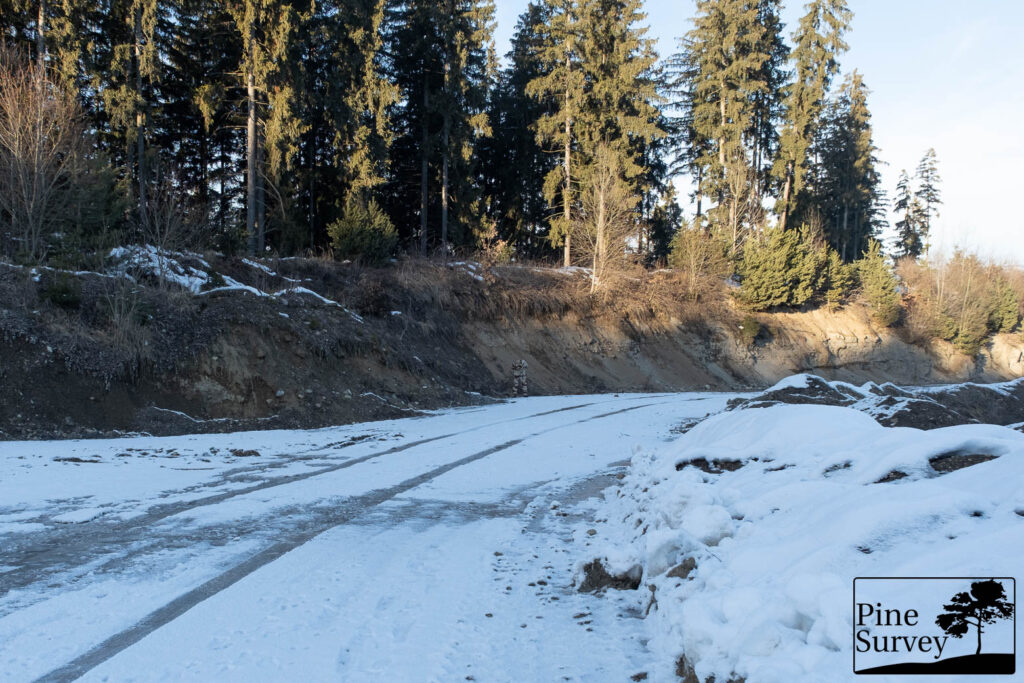
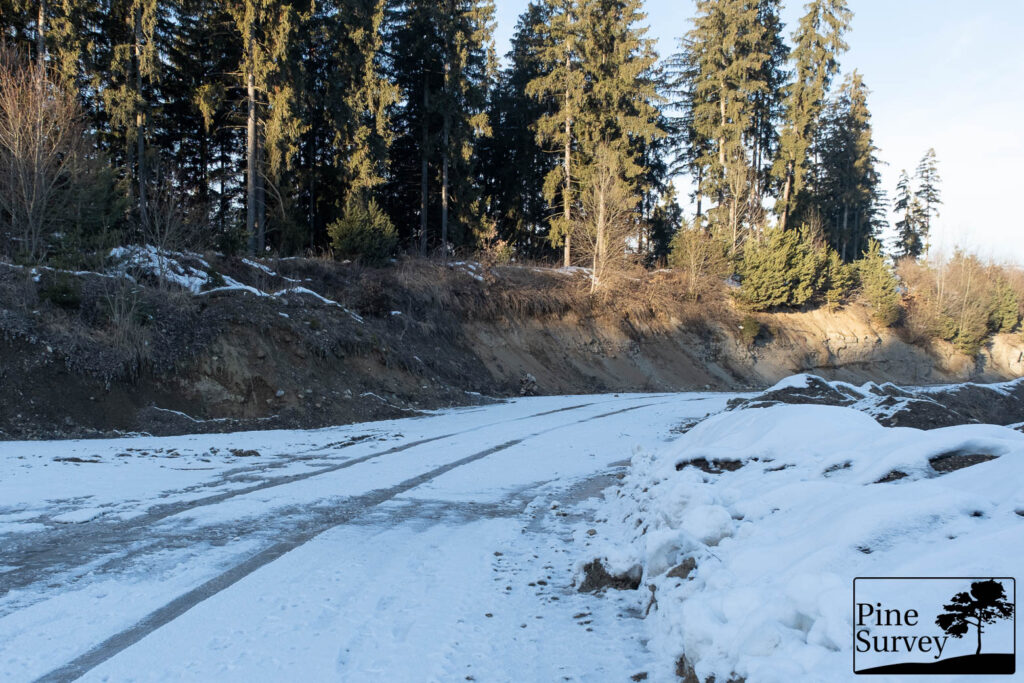
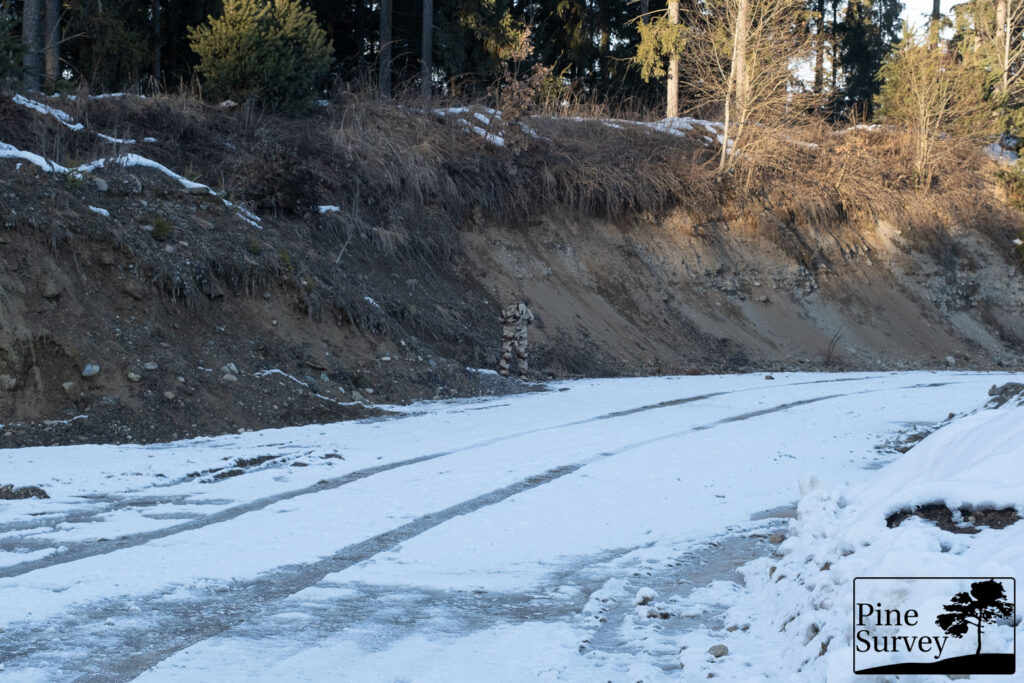
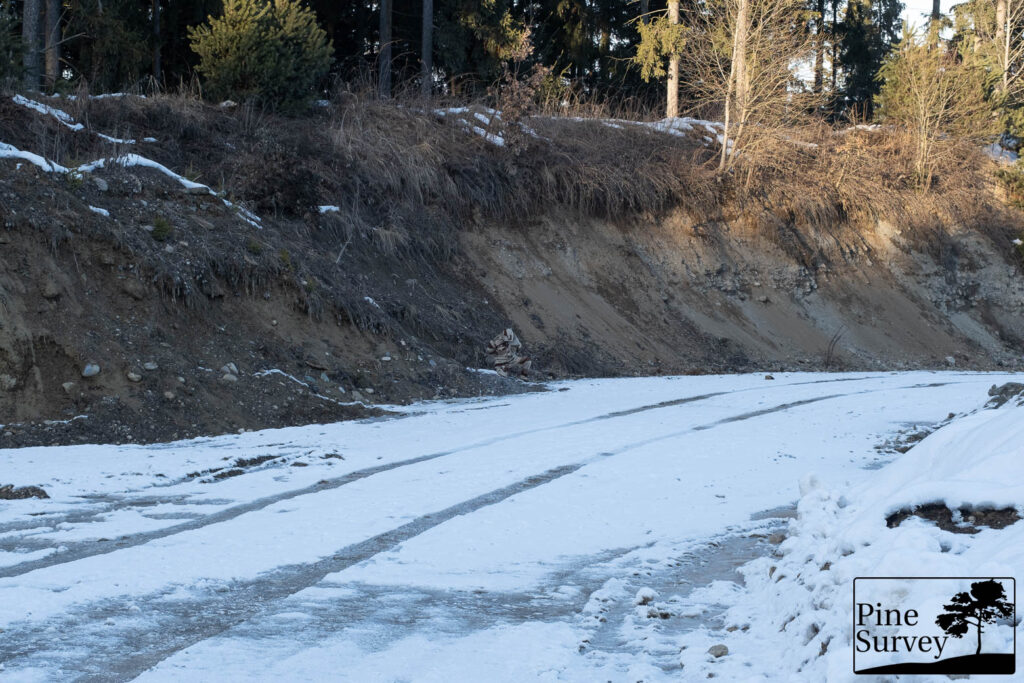
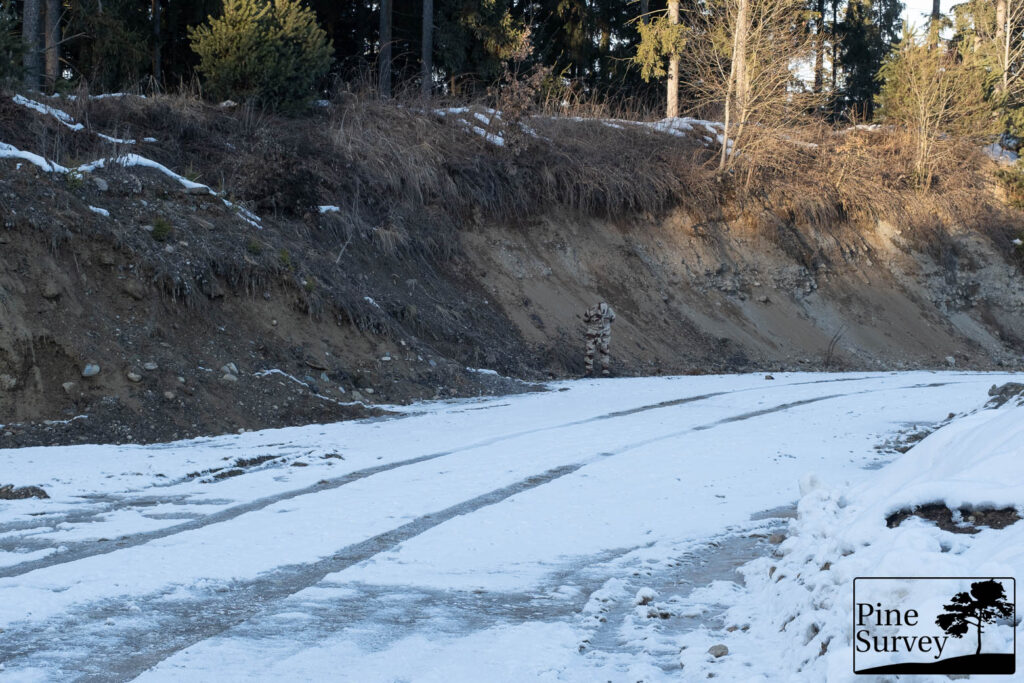
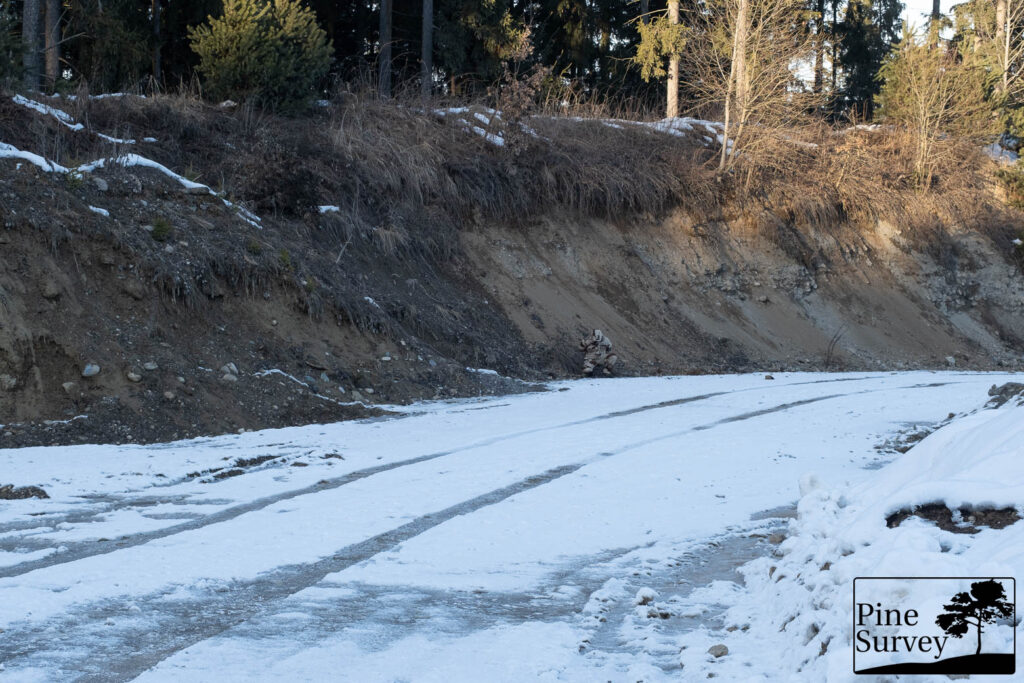
Observations – Location 3
As you can see I changed the spot where I am standing to give you an idea of both the dark as well as the bright sandy background.
The pictures of the wide angle lens show how the macro pattern of French Daguet desert camouflage is effectively disrupting the silhouette. While the colors do not match the background exactly, they do blend into it partially and provide plenty of camouflage. While the standing position slightly gives away the broken up silhouette, the kneeling position makes the body blend in even better, by minimizing any human form. The strong contrast of the macro elements do the rest. The same can be said about both the dark and the bright background.
The pictures using 35mm focal length depict the pattern much better, and also that it stands out more than expected. While standing the silhouette is clearly visible, while the colors still match the background to a basic level, being arid and brown. The macro elements however provide plenty of disruption, breaking up some of the outlines. In the kneeling position this effect results in a more than usable camouflaging effect. Especially against the sandy background, one can see the relative good effectiveness of the pattern.
Conclusion
Initially I wanted to show desert patterns in partially snow covered environments, but given the snowfall this changed to a full winter environment. To my surprise the effectiveness was even better than expected. One can clearly see how various desert patterns actually work in winter as well, given their arid and brown colors that match the dead vegetation.
French Daguet desert camouflage is no exception in this regard. Given its brown, tan and sand colors, it matches most dead vegetation that might stand out in a winter environment. At the same time the disruptive effect of the French pattern results in an excellent disruption of the human silhouette.
Just like Finnish M04 desert camouflage, French Daguet is obviously not aimed at working in a winter environment and therefore is not a 100% color match. However the muted arid colors fit the various surroundings better than a temperate or better said “green” camouflage pattern would. The overall look and feel is not “off” as already mentioned in the observations above and if one is not willing to invest in a winter set up, but has use for desert colors, can gain a double use effect.
With that being said, thank you for reading! Many thanks for the support by Arktis Ltd!
Take care!

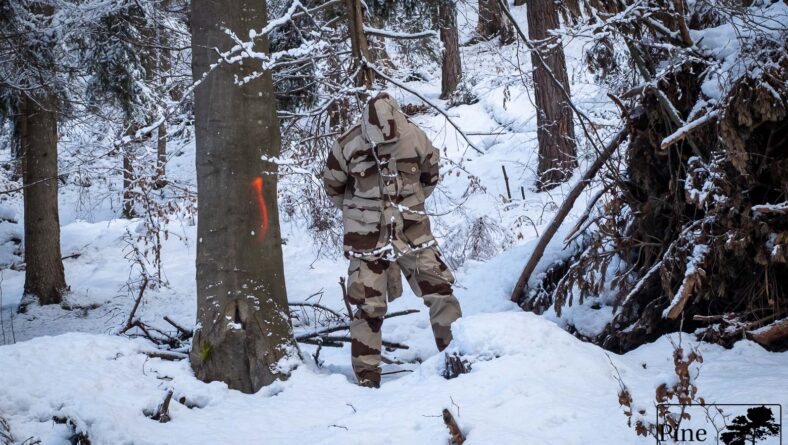
No Comment
You can post first response comment.